




The investment world likes to complicate everything. Our Managed Fund likes to keep it really simple. It’s made up of equities, bonds and cash, and we think to generate great returns, that’s all you need. The result is a balanced portfolio with low turnover and low fees. Beautifully straightforward, it’s been answering questions since 1987. Capital at risk. Find out more by watching our film at bailliegifford.com
Markets on fast forward as gold continues to shine
07 Trump’s attack on Federal Reserve chair Jerome Powell prompts fresh US losses
Growth shows Netflix is on track for ambitious 2030 targets
Science in Sport rally fuelled by growth return and takeover interest
Profit warning sees Bunzl shares suffer worst one-day fall in a decade
Positive momentum at GSK is expected to continue in Q1
12 Can Coca-Cola demonstrate its resilience?
14 Wise is on track to be a big winner in the cross-border payments market
16 The Property Franchise Group is a great play on a robust UK residential market
18 Mitie shares hit multi-year high on raised outlook and buyback
20 ProCook’s progress continues to please FEATURES
COVER STORY HANDS-ON EXPERIENCE
Working in an industry can give fund managers an edge
Why Currys is in a recovery mode and how it can bely retail doom and gloom
Discover high-yielding share-focused investment trusts
Which sectors dominate the Korean market and how has it performed? / Emerging markets: South Korea, trade and tariffs and Chinese banks
How to readjust your ISA allocations without making fresh contributions 40 DAN COATSWORTH
Three ways AJ Bell customers responded to the Liberation Day market selloff 43 INDEX Shares, funds, ETFs and investment trusts in this issue

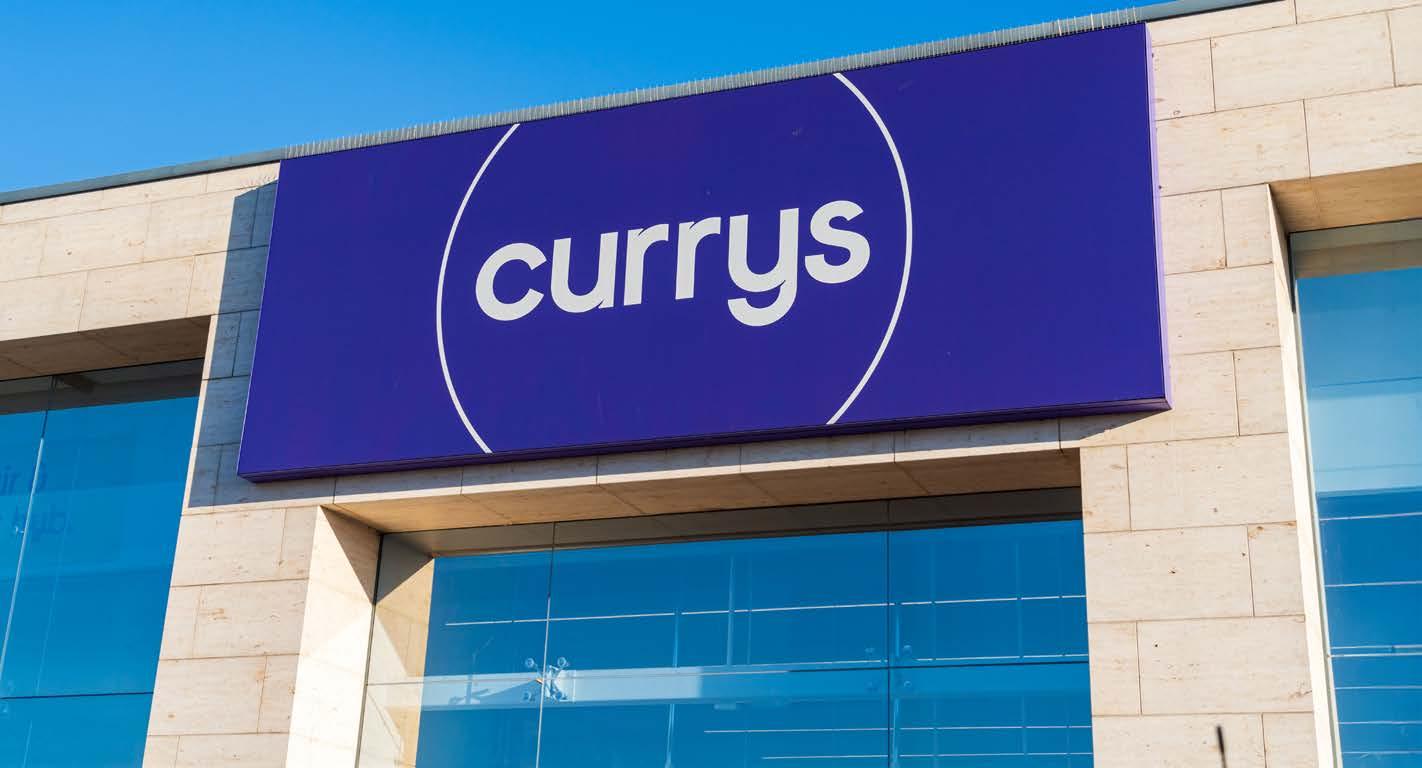




1
Hands-on experience
If a fund manager has working experience of a sector they are investing in, it can help give them an edge.



3
Netflix aims for $1 trillion valuation
Reports suggest the streaming giant wants to more than double its market value but it could be tripped up by capricious markets.
Did you know that we publish daily news stories on our website as bonus content? These articles do not appear in the magazine so make sure you keep abreast of market activities by visiting our website on a regular basis.
Over the past week we’ve written a variety of news stories online that do not appear in this magazine, including:


Currys could bely retail gloom
Self-help measures are delivering increased cash flow at the electronics retailer, one of the few remaining operators with a meaningful physical presence.

Dunelm rallies on robust third quarter growth and reiterated profit guidance

gains despite cautious outlook for profits


Boring can be beautiful but when things get interesting in the wrong way the results can be ugly
Is it really less than 100 days since the Trump administration took office? The symbolically significant 100th day actually comes next week on 30 April but such has been the speed at which it has moved that it feels like the whole world has been on fast forward ever since. Nowhere has this been more evident than in precious metal prices.
Having topped $2,000 for the first time in August 2020 during pandemic uncertainty, it took another four years for gold to hit the $2,500 mark. Then, by March of this year, so a little more than six months later, it crossed over the $3,000 threshold. Astonishingly it has taken less than six weeks to hit $3,500, with $4,000 an ounce – a level we discussed in last week’s issue – now very much in sight.
Sabuhi Gard takes you through the latest market drama and why US assets remain under considerable pressure in this week’s News section
At times like this it pays to stay grounded and our main feature this week from James Crux looks at fund managers with hands-on experience in the industry or sector they are investing in and how this can give them an edge. We also highlight investment trusts offering the potential for steady income during unsettling times.
Elsewhere in the digital magazine, you can read
more about two companies which appear to be thriving despite all the uncertainty – electronics retailer Currys (CURY) and streaming services giant Netflix (NFLX:NASDAQ).
Boring can be beautiful on the stock market. Sound companies, whose activities are less than glamorous yet generate sustainable cash flows and profitable growth, often attract fans. However, if a previous steady Eddie messes up the results can be pretty ugly. So it proved with Bunzl (BNZL). The company distributes everyday essentials like disposable coffee cups and food wrap which enable businesses to carry out their day-to-day activities.
The market has come to prize the company’s reliability, so the major profit warning on 16 April and decision to suspend the share buyback (of which you can read more detail in this week’s News section) led to a pronounced sell-off.
It could take months or years to undo the damage done to the company’s reputation by a single announcement as investors look for it to reclaim its credentials as a mundane marvel. It also suggests that investors may have started to take buybacks for granted. This method of returning capital to shareholders has been perceived as more flexible than a dividend, where a cut or suspension would cause more disquiet. Bunzl’s experience suggests that may no longer hold true.


















Guinness Quality Income Funds












WS Guinness Global Equity Income Fund
∙ Seeking capital and dividend growth from quality companies worldwide.
WS Guinness European Equity Income Fund




∙ Investing in quality companies from among Europe ex-UK’s globally leading businesses.


WS Guinness Asian Equity Income Fund
∙ Selecting from the growing number of quality companies in Asia Pacific ex Japan.
Guinness Emerging Markets Equity Income Fund

∙ Providing investors with growth and income from emerging markets worldwide.
Visit guinnessgi.com/income or call 020 7042 6555


Scan the QR code to find out the record length for a giraffe’s neck.

This is a marketing communication. Please refer to the Prospectus, Supplement and KIID/KID for the Funds before making any final investment decisions.
Risk: Past performance is not a guide to future performance. The value of this investment and any income arising from it can fall as well as rise as a result of market and currency fluctuations. You may not get back the amount you invested. Guinness Global Investors is a trading name of Guinness Asset Management Ltd., which is authorised and regulated by the Financial Conduct Authority. Calls will be recorded.
Investors flee to safe haven asset gold which hits new record high of $3,500 per ounce
Wall Street took a turn for the worse over Easter as US president Donald Trump attacked US Fed chair Jerome Powell for not lowering interest rates.
Trump’s tirade against Powell was not just restricted to Easter, he previously called publicly on social media for Powell to be fired saying ‘Powell’s termination cannot come fast enough’.
The US president’s comments caused US markets to sell off with the Dow Jones Industrial Average Index and the S&P 500 index falling more than 2% on Easter Monday (21 April).
The US dollar was also a Trump casualty with the currency falling to a low of $1.3487 against the pound a level not seen since February 2022.
US treasuries didn’t fare any better with the 10-year yield jumping eight basis points higher at 4.4%.
appearance it has buckled in the face of political pressure.
The gold price hit a new all-time high breaking the $3,500 per ounce as investors sought refuge in the alternative safe haven to the dollar and US treasuries. Currencies like the yen and Swiss franc have also been in heavy demand.

The dollar and US treasuries have been under the cosh since Trump’s Liberation Day tariffs announcement on 2 April.
While, the 90-day pause in most reciprocal tariffs announced on 9 April was a source of market relief, rhetoric apparently threatening the independence of the Fed was always likely to be a cause for concern to the markets. It might even constrain the central bank’s ability to cut rates if it wants to avoid any
Subsequent comments from Trump that he had no intention of firing Powell and hints from treasury secretary Scott Bessent about a de-escalation of the tariff standoff with China helped US stocks reclaim some of their losses on 22 April.
Russ Mould, investment director at AJ Bell says: ‘Persistent comments from president Donald Trump, which put the independence of the US Federal Reserve in question, resulted in weakness in the dollar, US treasuries and Wall Street.
‘US currency and government debt are often a safe haven during times of market turbulence but, with America the source of much of the recent volatility, investors have been reaching for another obvious port in the storm, gold, in large numbers.’ [SG]
DISCLAIMER: Financial services company AJ Bell referenced in this article owns Shares magazine. The author of this article (Sabuhi Gard) and the editor (Tom Sieber) own shares in AJ Bell.

Streaming giant sees roadmap to $1 trillion market cap, but lots of stars need to align
Executives at Netflix (NFLX:NASDAQ) have set an internal target for the streaming giant to achieve a $1 trillion market valuation by 2030, according to reports. And analysts are rapidly buying into the firm’s ambitions after the company’s strong annual revenue outlook alongside earnings on 17 April helped ease concerns about the impact of economic uncertainty and rising tariffs.
The Wall Street Journal first reported that a recent strategy meeting saw Netflix leaders share their vision to double the company’s revenue and triple its operating income by the end of the decade, citing people who attended the meeting.
Ambitious targets for the next five years call for annual revenue of $80 billion, ad revenue of $9 billion, and $30 billion of total operating profit.
In 2024 (to end December), Netflix reported annual revenue of $39 billion, up 16% on 2023.
Based on data from Statista and media publication Campaign, global ad revenue last year doubled to approximately $2.12 billion, and is set to double again in 2025.
Full-year 2024 operating profit was $10.4 billion, on a rough 27% operating margin.
Pivotal Research is among the growing number of analysts to back Netflix, raising its share price target to $1,350, and calling the company a winner in the global streaming war.
Source: LSEG
‘Netflix internal goal of reaching $1 trillion in market capitalisation by 2030 is reasonable,’ Pivotal Research analyst Jeffrey Wlodarczak wrote in a note to clients, ‘as the streaming giant is poised to benefit whether or not the US heads into a recession.’
Pivotal Research was one of several analysts to praise Netflix’s latest quarterly earnings and raise forecasts and price targets. Based on Koyfin data, the consensus target price for the stock over the next 12 months stands at $1,094.
At the time of writing, Netflix’s market cap stands at $420.4 billion, based on a $988.26 share price.
The platform is experiencing substantial growth, and latest figures show it adding 18.9 million subscribers

worldwide, bringing the total number of Netflix users to 301.6 million. The company’s executives are now aiming to increase this subscriber base to approximately 410 million by 2030, focusing on international markets, such as India and Brazil, for much of this expansion.
The company’s ad-supported tier, launched in late 2022, is gaining traction, accounting for 55% of Q1 2025 sign-ups in markets where it is available, according to the company.
While massive subscriber growth was the primary driver in 2024, Wedbush expects price increases to do much of the growth heavy lifting in 2025, and the ad tier to drive revenue higher in 2026, calling the stock ‘refuge from uncertainty’ due in part to a ‘virtually insurmountable lead in the streaming wars’.
By adding live events and broadening its content offerings, Netflix should be able to add more advertising revenue for the next several years, Wedbush analyst Alicia Reese wrote in a note to clients.
Yet investors should beware of fixating on the $1 trillion market cap target given the capricious nature of stock markets. Netflix’ next 12-months PE (price to earnings) multiple has swung wildly over the past two years, ranging from less than 25 to more than 43. It currently sits in the mid-30s.
Running some simple back-of-notebook calculations, 2030 $80 billion and $30 billion revenue and operating profit targets would imply something like $60 to $64 of EPS (earnings per share). Using a $62 mid-point, it implies a PE of about 38, and a rough $2,335 share price, would be required for the market cap to hit the $1 trillion mark. [SF]
The performance nutrition minnow’s turnaround has caught the attention of private equity
Science in Sport’s (SIS:AIM) stock has more than doubled to 32.5p over the past year amid positive turnaround progress under a new leadership team.
But the most recent share price spike was triggered by news of a recommended bid from private equity firm bd-capital, whose investments include gut health food supplement provider Symprove and Netherlandsbased vitamins, minerals and supplements brand Bonusan.
for the nutrition products minnow with a disappointing history on the stock market history.

Having evaluated the terms of the 34p per share offer, Science in Sport’s board reached an agreement
Shares in Science in Sport, which makes gels, powders, bars and supplements for sports teams, elite athletes and weekend warriors alike, are in negative territory on a five-year view, but the stock has rallied more recently thanks to balance sheet repair, cost savings and margin expansion with both the SiS and PhD brands showing an improved performance.
In a trading update on 30 January, Science in Sport reported adjusted
Selling wipes more than £2.5 billion off market cap
Shares in global distribution and outsourcing group Bunzl (BNZL) suffered their worst daily fall in a decade after the firm uncharacteristically cut its earnings guidance and suspended its share buyback.
The FTSE 100 firm saw its stock price plummet more than 25% to £22.90 on 16 April as it blamed ‘a more challenging economic backdrop’ for its disappointing firstquarter performance and lowered the outlook.
we have seen some revenue softness across our North American businesses,’ said the firm.
‘This has resulted in operating margin pressure across the business area, and in particular it has amplified challenges specific to our largest business, which primarily services foodservice and grocery customers.’

To reflect the operational challenges facing its largest business in North America, the group lowered its operating margin forecast to below 8% instead of in line with or better than last year’s 8.3% margin.
‘Since our last update, in a more uncertain macro environment,
However, even this may be subject to change as the first-half margin is seen at ‘around 7%’, meaning there needs to be a substantial
Source: LSEG
EBITDA (earnings before interest, tax, depreciation and amortisation) doubled to £4.2 million for the 2024 calendar year, along with a £7 million reduction in net debt to £5.9 million.
Management flagged a good start to 2025 and said it expected the return to growth seen in the second half of 2024 to persist into the current financial year, added its ‘confidence in targeting a 15% EBITDA business earlier than previously anticipated is increased’. [JC]
2,500 3,000 3,500
Source: LSEG
improvementin the second halfof theyear,while the latestguidance excludes the potential impactfrom tariffs ortheireffecton inflation and economic growth.
The firm also paused its £200 million share buyback programme,with £115 million of shares purchased so far, in order to conserve capital and reduce its gearing. [IC]
FULL-YEAR RESULTS
28 April: Elixirr International, Frenkel Topping
29 April: MPAC Group
30 April: Novacyt, Sanderson Design Group, Strix Group, Vivendum
1 May: Clean Power Hydrogen, Keystone Law Group
FIRST-HALF RESULTS
29 April: Associated British Foods, Focusrite

TRADING ANNOUNCEMENTS
25 April: Evoke
29 April: Alfa Financial Software, AstraZeneca, BP, Coca-Cola Europacific Partners, Elementis, Entain, HSBC, NCC, Travis Perkins
30 April: Aberdeen, Coca-Cola HBC, GSK, Haleon, Next, OSB, PPHE Hotel, Segro, Smith & Nephew, Spectris, Taylor Wimpey
1 May: Endeavour Mining, Lancashire, London Stock Exchange, Persimmon
Global supply chains across the pharmaceutical industry are very complex
Pharmaceutical outfit GSK (GSK) delivered a string of positive trading updates in 2024 and ended the year raising sales guidance for 2025 and nudging up its 2031 sales target to more than £40 billion as well as announcing a £2 billion share buyback, its first in over a decade.
At the full year results on 5 February the company said it expects revenue growth of between 3% and 5% while core operating profit and EPS (earnings per share) are anticipated to grow between 6% and 8% in 2025.
Significant progress in latestage clinical trials over the last 12-months and ‘multiple’ drug launch opportunities from 2025, prompted the company to increase its 2031 sales target to £40 billion from £38 billion.
Ordinarily investors might have expected the positive tone to continue when GSK releases firstquarter results on 30 April.
However, president Donald Trump has since muddied the waters after announcing plans to impose tariffs on the pharmaceutical industry, which may result in some companies removing forward guidance.
When asked about tariffs chief executive Emma Walmsley told Bloomberg she is hoping for the best


Source: LSEG
but positioning for the worst. Elaborating, Walmsley said: ‘One of the things that perhaps is underestimated for GSK is that when we went through the separation and the creation of Haleon (HLN), we used that to reset our global supply chain for meaningfully more resilience. That includes dual sourcing in all circumstances.’
The chief executive also made the point that GSK does not manufacture in China, which means there is no direct impact from the China-US trade war. ‘Perhaps you could even argue there may be opportunity as a Britishbased but global company for us,’ suggested Walmsley. [MG]
Investors will expect resilient firstquarter figures and potentially another earnings beat from CocaCola (KO:NYSE) when the beverages giant serves up first quarter results on 29 April.
Iconic brands including ‘Coke’, the world’s most recognised soft drink, unparalleled distribution capabilities and enviable pricing power arising from low demand elasticity suggest the Sprite and Fanta owner should be able to shrug off the worst of any tariff-related turmoil.
In fact, the drinks powerhouse is largely insulated from the trade war since the bulk of its products are bottled and distributed in their home countries. Tariffs on aluminium could
Source: Zacks The
have an impact on prices, which is why the astute company is looking at ways to expand availability of its plastic bottles.
Despite the tariffs-induced market sell-off, shares in Coca-Cola are up 17% year-to-date reflecting investors’ desire to own a classic defensive whose total beverage portfolio has nearly doubled in retail value over the past decade and which has increased its dividend in each of the last 62 years.

Source: LSEG

When Coca-Cola reports, investors will want to know if Coca-Cola is on course to meet guidance for full year 2025 organic revenue growth of 5% to 6% and to hear CEO James Quincey’s thoughts on everything from the health of the US consumer to currency headwinds to the impact of weight-loss drugs on demand for sugary sodas, although Coca-Cola has been grabbing market share as healthconscious drinkers shift allegiance to no-sugar options and sparkling waters.
On 11 February, Coca-Cola’s fourth quarter results demonstrated that its ‘all-weather strategy’ is working, with organic revenues up 14% amid further market share gains. The Schweppes-to-Topo Chico brands owner also delivered a year-on-year rise in operating margins from 21% to 23.5%. [JC] US UPDATES
QUARTERLY RESULTS
25 April: Abbvie, Colgate-Palmolive, Schlumberger
28 April: Cadence Design, Waste Management, Welltower
29 April: American Tower, Coca-Cola, Honeywell, Kraft Heinz, Mondelez, PayPal Pfizer, Royal Caribbean Cruises, Starbucks, United Parcel Services, Visa
30 April: Caterpillar, eBay, Garmin, Meta Platforms, MetLife, Microsoft, Qualcomm, Yum! Brands
1 May: Airbnb, Apple, Amazon, Eli Lilly, Linde, Mastercard, McDonald’s, Monster Beverage, Strategy, Stryker

PLEASE REFER











The Merchants Trust aims to provide an above average level of income that rises over time. So whilst we focus on investing in large UK companies with the potential to pay attractive dividends, you can focus on travel, family, home, retirement – whatever really matters to you. Although past performance does not predict future returns, we’ve paid a rising dividend to our shareholders for 42 consecutive years, earning us the Association of Investment Companies’ coveted Dividend Hero status. Beyond a focus on dividends, Merchants offers longevity too. Founded in 1889, we are one of the oldest investment trusts in the UK equity income sector. To see the current Merchants dividend yield, register for regular updates and insights, or just to find out more about us, please visit us online.
www.merchantstrust.co.uk
INVESTING INVOLVES RISK. THE VALUE OF AN INVESTMENT AND THE INCOME FROM IT MAY FALL AS WELL AS RISE AND INVESTORS MAY NOT GET BACK THE FULL AMOUNT INVESTED.
A ranking, a rating or an award provides no indicator of future performance and is not constant over time. You should contact your financial adviser before making any investment decision. For further information contact the issuer at the address indicated below. This is a marketing communication issued by Allianz Global Investors UK Limited, 199 Bishopsgate, London, EC2M 3TY, www.allianzglobalinvestors.co.uk. Allianz Global Investors UK Limited company number 11516839 is authorised and regulated by the Financial Conduct Authority. Details about the extent of our regulation are available from us on request and on the Financial Conduct Authority’s website (www.fca.org.uk). The duplication, publication, or transmission of the contents, irrespective of the form, is not permitted; except for the case of explicit permission by Allianz Global Investors UK Limited.
Group’s long-term ambition is to become ‘the’ network for the world’s money
Wise Group (WISE) 957.5p
Market cap: £12.3 billion
International payments provider Wise (WISE), formerly known as Transferwise, has set its sights on handling £1 trillion of cross-border payments annually compared with £118 billion last year.
While that might appear ambitious, nine years ago the firm handled just £7 billion of cross-border payments which means the business has grown at a compound annual rate of 33% per year.
Despite this strong growth, Wise has only just scratched the surface of the global market opportunity.
The company believes it has garnered less than 5% of the annual £2 trillion of cross-border payments moved by individuals, a market which has grown by 19% in each of the last two years.

Source: Wise
Source: LSEG
On top of that, Wise holds less than a 1% market share of the SME (small and medium-sized) businesses market which is worth £12 trillion annually and has grown by 9% compounded over the last two years.
We believe Wise has built a strong customercentric proposition enabling it to capture increasing market share from traditional banks.
Co-founder and chief executive Kristos Kaarmann believes this approach is fundamental to every company’s long-term success.
‘We’ve been very clear to ourselves, the more value we create for our customers the more valuable is the company we’re creating,’ explains Kaarmann.
Wise makes moving money across borders cheaper, faster and more convenient for its customers. The firm’s average fees across all routes are around 0.64% with major currencies costing less than 0.3%.
This is a huge advantage over incumbent banks who often see international transfers as an add-on service rather than a core competency. This means they typically charge 2.7% for major currency transfers and nearly 10% for less mainstream currencies.
Because Wise knows which banks its customers
Source: Stockopedia, Refinitiv
used in the past, it can quantify the money it has saved clients. At last count, the company estimates its customers have saved between £1.6 billion to £2 billion annually.
One unique aspect of Wise’s business model which we believe is fundamental to its continued success is that as the business scales, efficiency gains are passed on to customers.
This sharing of scale benefits with customers creates a virtuous circle, ensuring customers keep coming back, while also widening its cost advantage or ‘moat’ over competitors.
A further cost advantage of Wise’s model is that two thirds of new customer growth is through word of mouth.
It might be tempting to assume incumbents are fighting back, but as Kaarman explains: ‘The same opportunity we worked on five years ago hasn’t moved much. Consequently, we are very much at the beginning [of expanding our market share].’
Perhaps surprisingly, many banks have actually been encouraging their customers to use Wise which has led the company to develop the ‘Wise platform’ offering banks and institutions the same experience as retail customers.
It is a win-win for customers, banks, and Wise,
Wise became the largest UK direct stock market listing in 2021, priced at 800p per share and valuing the business at £8 billion. This means no money was raised and no existing shareholders sold any shares.
It is also worth noting the dual class structure which gives the founders enhanced voting rights.
The board is reviewing the optimal listing arrangements for the company, which could lead to the shares joining the blue-chip FTSE 100 index, and an outcome is expected in the coming weeks.
claims Kaarmann.
‘The infrastructure we’re building up, or that we have built and will build, puts us in a unique position where no one else can move funds with such efficiency globally,’ adds Kaarmann.
Infrastructure is becoming a significant competitive advantage for Wise, which now has six direct connections to domestic payment systems across the globe, the latest being the Philippines.
Wise is also the first non-bank to be approved to join Japan’s Zengin payment system. In the UK, banks on the Wise platform enjoy significant benefits such as a nine-times reduction in transaction costs, post integration.
The business generates high gross margins of around 70% and healthy underlying pre-tax margins. In the first half to September 2024, underlying pre-tax profit increased 57% to £147 million representing a margin on income of 22%.
Increased investment in pricing is expected to see the full-year margin move closer to the company’s target range of between 13% and 16%. In 2025 and the medium term, the company expects to grow underlying income between 15% and 20% a year.
In short, we believe Wise’s relative scale advantage, best-in class infrastructure and strategy to share scale efficiencies with customers should make it a sustainable winner in cross-border payments. [MG]
The firm’s prospects have been transformed in the last year
For investors who want to tap into growth in the UK residential market, both in terms of sales and rented accommodation, The Property Franchise Group (TPFG:AIM) makes a very attractive proposition.
Whereas housebuilders have been under the cosh in market terms, with their share prices down by as much 10% this year and as much as 60% since just before the pandemic, Property Franchise is up 2% year-to-date and a whopping 65% since February 2020, excluding dividends, thanks to strength in its lettings business.
Even so, the shares currently trade on an undemanding 11.5 times forward earnings, with a dividend yield of nearly 5% according to Stockopedia, so the total return outlook looks very appealing to us.
The Bournemouth-based group is a multi-brand lettings and estate agency franchising company engaged exclusively in residential sales and lettings with just under 2,000 outlets nationwide and a managed portfolio of 153,000 properties.
The Property Franchise Group
Source: LSEG
agents increased 76% to £28.3 million, while financial services income leapt from £1.5 million to £19.2 million and licensing income rose to £7.2 million, of which £5.2 million is recurring.

Adjusted pre-tax profit rose 99% to £22.3 million, while the underlying like-for-like increase was 16% which is at the top of the firm’s internal target of driving earnings growth of between 10% and 15% per year.
Operating cash flow increased to £14.7 million from £9 million, and although net debt was £9.1 million against net cash of £5.1 million the prior year due to borrowing to fund acquisitions, the total dividend for 2024 was up 29% to 18p per share.
Last year was a transformational one for the group as it acquired rival Belvoir in March and GPEA in May, leading to a 146% increase in revenue to £67.3 million including £35 million from recurring sources.
Management service fees from its franchised
It’s important to point out that although synergies are likely to come as a result of last year’s acquisitions, the most important consideration by far for Property Franchise’s board was being able to tap into the opportunities which scale brings with it.
The company’s brands now include Belvoir, CJ Hole, Country Properties, Ellis & Co, EweMove, Fine & Country, Hunters, Lovelle, Martin & Co, Mr and


















Mrs Clarke, Mullucks, Newton Fallowell, Nicholas Humphreys, Northwood, Parkers, The Guild of Property Professionals and Whitegates.
As well as almost doubling the size of its managed estate, the firm’s sales pipeline has swelled from £23 million to £33 million and the number of mortgages delivered rose to 23,000 thanks to the inclusion of Brook Financial Services, part of Belvoir.
‘The Property Franchise Group has a track record of growth and now, with our increased scale and capability, we are a significantly stronger business, able to offer even greater value and growth potential,’ commented chief executive Gareth Samples on the release of the full-year results.
‘I am incredibly excited for what lies ahead, with a clear strategy and an exceptional team in place to realise the full potential of the enlarged group.’
That excitement was palpable when Shares caught up with Samples at the end of a busy week of presentations.
‘To begin with, we thought two plus two would equal five,’ said Samples, referring to the Belvoir takeover.
‘We soon realised it’s more like two plus two equals seven. It feels like a brand-new business.’
Samples is keen to increase the sales side of the franchising operation, joking that Belvoir was ‘almost as bad as us’ in terms of prioritising the


lettings business at the expense of sales revenue.
With marginal UK lenders like Santander and Virgin cutting mortgage rates and the Bank of England potentially set to cut rates at next month’s meeting, major players like Halifax and Nationwide could also lower the cost of their mortgages which would give the residential market a nice lift over the summer.
At the same time, there is potential to boost growth at the licensing business and Fine & Country has already opened four overseas offices.
As well as providing better products and services to licensing customers by leveraging the group’s wider portfolio, Samples aims to sell into newlyacquired licensing territories.
That could mean attracting UK residents looking to relocate, sell their properties here and buy a place overseas, or those looking to sell up abroad and return to the UK.
Meanwhile, the core UK lettings market is ‘really good’ says Samples, and with new products coming this year plus an AI-driven digital marketing strategy the group’s franchisees have even more tools to drive their businesses forward.
Analysts Justin Bates and Portia Patel at Cannacord are forecasting 30% cumulative earnings per share growth over this year and next year, underpinned by the group’s ‘material’ recurring revenue streams which as they point out mean profits are more stable and less cyclical than the market appreciates. [IC]
It has been a good year so far for ‘recovery story’ Mitie (MTO), with the shares up 19% at the time of writing and 27% higher than when we recommended the stock in April 2024 compared with a slight fall in the FTSE 250.
We said at the time the new management team led by Phil Bentley had put the business –which looks after buildings from banks to schools, hospitals and critical government sites – back on track, and increased regulation would act as a tailwind to growth.
Back in November 2024, the company posted strong first-half results with revenue and operating profit for the six months to September up 14% driven by 8% organic sales growth from record new contract wins, increases in the scope of some projects and higher prices.
The board reiterated its confidence in hitting its full-year targets and in the lead-up to the results doubled the share buyback to £100 million.
Last month, the group upgraded its full-year

revenue and profit guidance (16 April) and announced a new £125 million share buyback, sending the shares to a three-year high.
Chief executive Phil Bentley commented: ‘We are entering FY26 with good sales momentum, including the new security contract win with DWP (Department of Work & Pensions), a record pipeline of opportunities and a strategic focus on how AI and intelligent process automation can help to deliver margins above 5% by FY27.’
We would continue to hold as the firm is only partway through its three-year transformation plan and there are still plenty of benefits to come.
The current consensus is for EPS (earnings per share) of 11.4p for the year to March 2025 and 12.7p for the year to March 2026, putting the shares on 11.7 times last year and 10.5 times this year, which looks too cheap to us.
With earnings continuing to beat expectations, analysts will need to keep upgrading their forecasts which means the shares should continue the rerating process. [IC]

The knives, pots and pans seller continues to outperform a difficult UK kitchenware market
ProCook (PROC) 33p
Gain to date: 13.8%
We originally highlighted ProCook’s (PROC) recovery and re-rating potential at 29p in October 2024, calling out the directto-consumer specialist kitchenware brand’s scope for profitable growth under a refreshed strategy.
We noted the Lee Tappenden-led company had delivered five consecutive quarters of retail like-forlike growth at the time and was hungry for market share, being back on the front foot in terms of brick and mortar store expansion.
WHAT HAS HAPPENED SINCE WE SAID TO BUY?
Despite a challenging market backdrop, the kitchenware designer and retailer is cooking up sales growth and securing market share under the stewardship of chief executive Tappenden and finance director Dan Walden.
Total sales grew 17.8% £15.5 million in a strong fourth quarter to 30 March 2025, including total like-for-like growth of 8.8%, with progress made across all product categories.
Retail like-for-likes rose 1.9%, marking a seventh consecutive quarter of positive organic growth as momentum builds, while e-commerce revenue shot up 23.4% to £5.9 million driven by increase traffic and average spend year-on-year and a successful relaunch on the Amazon UK marketplace.
WHAT SHOULD INVESTORS DO NOW?
Our buy call is 13.8% in the money and we are staying bullish given ProCook has tasty growth opportunities ahead from further store expansion
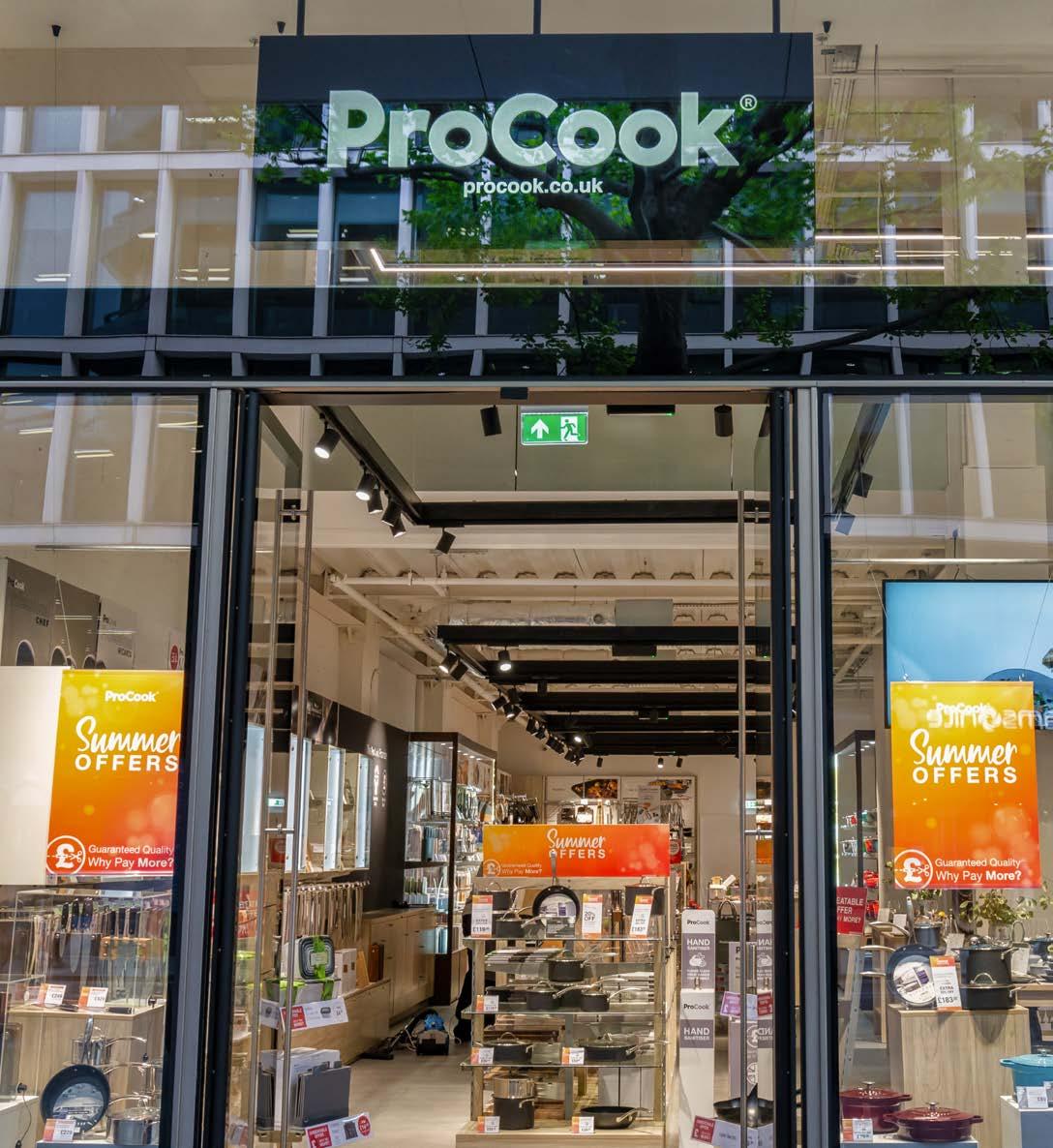
Source: LSEG
and like-for-like initiatives and has also improved its presence on social media.
Admittedly, full-year pre-tax profit is expected to come in slightly below previous guidance, but this reflects investment in the additional new stores opened in the year as well as currency volatility rather than any problems with the business, while year-end net cash should come in better than expected at £1 million.
ProCook is also confident in making good progress toward its medium-term ambitions of 100 stores, up from 66 currently, £100 million in revenue and a 10% operating margin. [JC]
Temple Bar Investment Trust is managed by Redwheel’s Ian Lance and Nick Purves, who have more than fifty years of investing experience between them.
Experts in the UK stock market, Ian and Nick are classic value investors, looking to build a diversified portfolio of the most compelling undervalued companies they can find.
With the UK stock market currently among the most attractively valued assets that investors can buy anywhere in the world, they are currently very excited about the potential opportunity that lies ahead for the Trust.

“UK stocks look very attractively valued in a global context and when compared to history. Overseas businesses are already recognising this potential through acquisitions, and management teams are buying back shares at a record pace. These could represent meaningful catalysts for unlocking the inherent value in UK stocks. The long-term opportunity for UK value investors is significant.”
Ian
Lance,
Portfolio Manager
Temple Bar Investment Trust
For further information, please visit templebarinvestments.co.uk

When it comes to fund selection, savvy investors will rightly focus on the investment philosophy and process, the vehicle’s charges, as well as past performance.
In terms of the qualities of the portfolio manager, many investors will look for longterm experience in the financial world or extensive qualifications, but there is one oft-overlooked trait which can provide a significant advantage: practical experience within the sector the fund manager is investing in.
Such expertise can be invaluable, conferring the stockpicker with a competitive advantage in sectors where investment outcomes can be binary, such as commodities and natural resources, or biotechnology.
A period spent actually working in the

industry, academia or business before making the transition to fund management can give the specialist investor an edge over the generalist investor.
As Darius McDermott, managing director at FundCalibre, informs Shares: ‘Practical industry expertise combined with financial acumen can elevate a good fund manager into a truly exceptional one. While financial knowledge is vital, managers who have worked within the industries they invest in often bring deep technical insight, a realworld understanding of market dynamics, and often valuable networks that help uncover opportunities others might miss. This experience can provide a crucial edge over the competition.’
According to McDermott, Nick Martin, lead manager of the Polar Capital Global Insurance Fund (B5339C5), exemplifies this blend.

Martin’s career began at Mazars Neville Russell, where he specialised in audit and consultancy services for insurance companies and brokers. ‘His deep knowledge of the insurance sector, built over many years working in risk and casualty markets, has been fundamental to the fund’s successhelping it become one of the best-performing funds of 2024, and offering investors rare access to a specialist and often undervalued sector,’ insists McDermott.
Similarly, Peter Michaelis, head of the Liontrust Sustainable Investment team, started his career after completing a PhD in Environmental Economics, going on to work as an environmental engineer at the Steel Construction Institute, before shifting into fund management over 20 years ago. ‘His combination of scientific expertise and financial skill has helped
build one of the UK’s most successful and recognisable sustainable investment brands,’ observes McDermott.
Another example is Gareth Powell, manager of the Polar Capital Healthcare Opportunities Fund (B3NLDF6), who studied biochemistry at Oxford University and gained hands-on experience in academic laboratories and the pharmaceutical industry, including at Yamanouchi (now Astellas) and the Sir William Dunn School of Pathology.
‘Gareth began his investment career in 1999 at Framlington, where he co-launched and managed the Framlington Biotech Fund,’ continues McDermott. ‘He joined Polar Capital in 2007 to establish its healthcare team and now brings over two decades of sector experience, combining top-down thematic ideas with rigorous stock selection, underpinned by deep industry insight.’

Source:

Industry experience and scientific backgrounds can be significant advantages for managers in the Biotechnology & Healthcare sector.
Marek Poszepczynski, co-manager of International Biotechnology Trust (IBT), brings both traits to the table at IBT, a fund targeting innovative biotech companies which address high unmet medical needs.
Poszepczynski and co-manager Ailsa Craig are both scientifically trained, which gives them an edge when assessing everything from the nature of clinical trials to the likelihood companies will become acquisition targets for Big Pharma, not to mention spotting any number of red flags.
Poszepczynski has worked for and started biotech companies himself and the managers add value by taking a risk-conscious approach to portfolio management which has led the trust to show a positive five-year share price total return, despite a difficult backdrop for the biotech sector.
‘I am scientifically trained,’ Poszepczynski explains to Shares. ‘The majority of people working in biotech have at least a Masters or Bachelors in Biotechnology or Chemistry or whatever, because it is very science-heavy. I started my career at a Swedish mid-sized company which was a spin-out from Pfizer (PFE:NYSE) and worked for five years in business development. I was scouting for new projects we were supposed to develop, which taught me a lot regarding drug development – what to look for in terms of pre-clinical aspects, regulatory aspects and manufacturing aspects.’
This experience of working in ‘venture’ taught Poszepczynski that you have to think about your investment as well as your exit. ‘When it comes to venture, you need to basically create companies sometimes from scratch. The lesson learned there was management is everything. You can have a great management team with a crappy project and they will always make it work, and you can have crappy management that can ruin the best projects. You have to vet the management teams and the boards.’
During their stint managing International Biotechnology Trust, Poszepczynski and Craig have used their scientific backgrounds and business nous to position the portfolio to benefit from M&A (mergers and acquisitions), a key driver of biotech sector returns with large pharmaceutical companies turning to biotechs to replenish drug development pipelines and fill revenue gaps as patents expire.
‘We have a very, very good hit rate because we are looking for the traits that pharma looks for, and we debate it on a daily basis,’ enthuses Poszepczynski. In January 2025, IBT’s biggest holding Intra-Cellular Therapies, a company advancing treatments for schizophrenia and bipolar depression, was acquired by Johnson & Johnson (JNJ:NYSE) for $132 per share, a 40% premium to the share price.
‘We’d been following Intra-Cellular for five or six years and it had continued to deliver. The company had good Phase III data in CNS (central nervous system) diseases and its compound was “unencumbered”, meaning Intra-Cellular owned it outright. We realised this would be a great addition for a pharma company. Intra-Cellular had also become profitable, which is one of the features pharma looks for because it is quickly accretive to the P&L.’


Market cap breakdown

>$2000m (34.9%)
$1000m-$2000m (5.8%)
Source: Amati Global Investors, data as at 31 March 2025
The resources sector is one where experience on the ground enables the specialist manager to spot things the generalist would likely miss. Take WS Amati Strategic Metals (BMD8NV6), a long-term capital growth fund which invests in listed metal and mining companies whose primary revenues are derived from ‘strategic metals’ – think gold, silver, copper, lithium, nickel, manganese, platinum group and rare earth metals.
The £49 million fund is managed by Georges Lequime and Mark Smith, who possess a rare combination of technical mining and geological expertise as well as fund management experience.
Asset allocation
Uranium (3.1%)
Graphite (3.8%)
Rutile (4.2%)
Lithium (8.7%)
Nickel (8.9%) Silver (26.2%)
Source: Amati Global Investors, data as at 31 March 2025
<$100m (10.6%)
$100m-$250m (13.8%)
$250m-$50m (11.5%)
$500m-$1000m (20.3%)
Lequime’s curriculum vitae includes a four-year stint as a mining engineer at Anglo American (AAL), while Smith has a thorough grounding in investment banking and company valuation and spent five years in West and East Africa in gold exploration. The global network of CEOs, CFOs, brokers, commodity traders, mining engineers and geologists they have built is responsible for many of the opportunities the managers unearth.
A geologist by education, Smith tells Shares: ‘Our skillsets complement each other. In mining and geology there are many reasons management teams use as an excuse for underperformance – weather, technical,
Rare Earths (2.3%)
Gold (43.0%)


Joe Krancki, Gresham House Ventures investment director, says the backgrounds of successful venture capital investors are a diaspora of degrees and career paths, but his is rooted in engineering and driving transformational change.
‘After completing a graduate degree in industrial engineering, I spent nearly a decade as a management and technology consultant. I designed, built and implemented enterprise software which dramatically improved the operations of global companies,’ Krancki explains.
‘That experience gave me a front-row seat to what true business transformation looks like. I worked with many promising technologies. From desktop to data centre, I was hands-on. Science and theory were important, but to be successful, so too were the organisational conditions and the reality of execution.’
In addition, his engineering background has fundamentally shaped how he approaches investing. ‘Engineering taught me to see businesses as systems – interconnected, dynamic, and constantly evolving. This systems-thinking lens allows me to quickly understand how different elements of an investment opportunity interact and why and how value can be created (or lost). My decisions are grounded in practical experience. Having built and delivered complex technology solutions, I know what “good” actually looks like. I look for founders who deeply understand the problem they’re solving and who build with discipline and clarity. I’m drawn to companies with the potential to drive systemic improvement, not just incremental change.’


social or economic. There’s always a get-out clause for management under-delivering or having a poor performance on the operation of a mine or a cost overrun. We rely on our technical backgrounds to say, “actually that’s not true, you should have seen that coming and these are the reasons”. Having that technical background gives us confidence to front-up management and say “sorry, you’re not dealing with a generalist investor. We worked in the industry and we’ve been doing this for 20-plus years”.’
The fund’s focus on small- and mid-cap mining stocks also plays to the managers’ strengths, as this area of the market requires much more technical due diligence than buying a Rio Tinto (RIO) or a BHP (BHP). ‘We do our own individual analysis of a company,’ continues Smith. ‘If it ticks a box we’ll go out and visit the company’s key mine or exploration asset and then do due diligence on site. It helps us sift through the companies and we’ll discount nine and buy one.’
Lequime insists the duo have a ‘speeddial to all the CEOs if there’s an issue’ when researching the heavily-discounted development companies they seek. ‘We have a big network of brokers across the world, so we can do checks and balances. That gives us an edge. Mining is an alternative investment sector really, and it has been out of favour for so long. It invites some unsavoury characters who are incentivised on their share price more than anything else, and you could be left holding the can. But we’ve shown with our fund that we do well over time.’


The fund and investment trust universe is home to a number of other stockpickers who lean into their specialist knowledge and industry experience to deliver results for shareholders and unitholders.
Robert Crayfourd, co-manager of CQS Natural Resources Growth & Income (CYN), Geiger Counter (GCL) and Golden Prospect Precious Metals (GPM), has a BSc in Geological Sciences from the University of Leeds which helps him dig out some of the best opportunities in the commodities space.
Douglas Brodie, manager of global smaller companies trust Edinburgh Worldwide (EWI), has a BSc in Molecular Biology and Biochemistry from the University of Durham in 1997 and a DPhil in Molecular Immunology from the University of Oxford in 2001, which help him steer a fund with a large weighting towards biotechnology. Another case in point is seasoned entrepreneur and investor Tim Levene, CEO of the UK’s only listed fintech-focused trust, Augmentum Fintech (AUGM). Levene knows the fintech industry like the back of his hand, having sat on multiple fintech boards including interactive investor, Tide and Zopa, and is highly active in crossindustry initiatives working to boost the UK fintech sector. [JC]
The tech products hawker is benefiting from self-help and is among the consumer stocks best-placed to shrug off Trump’s tariffs
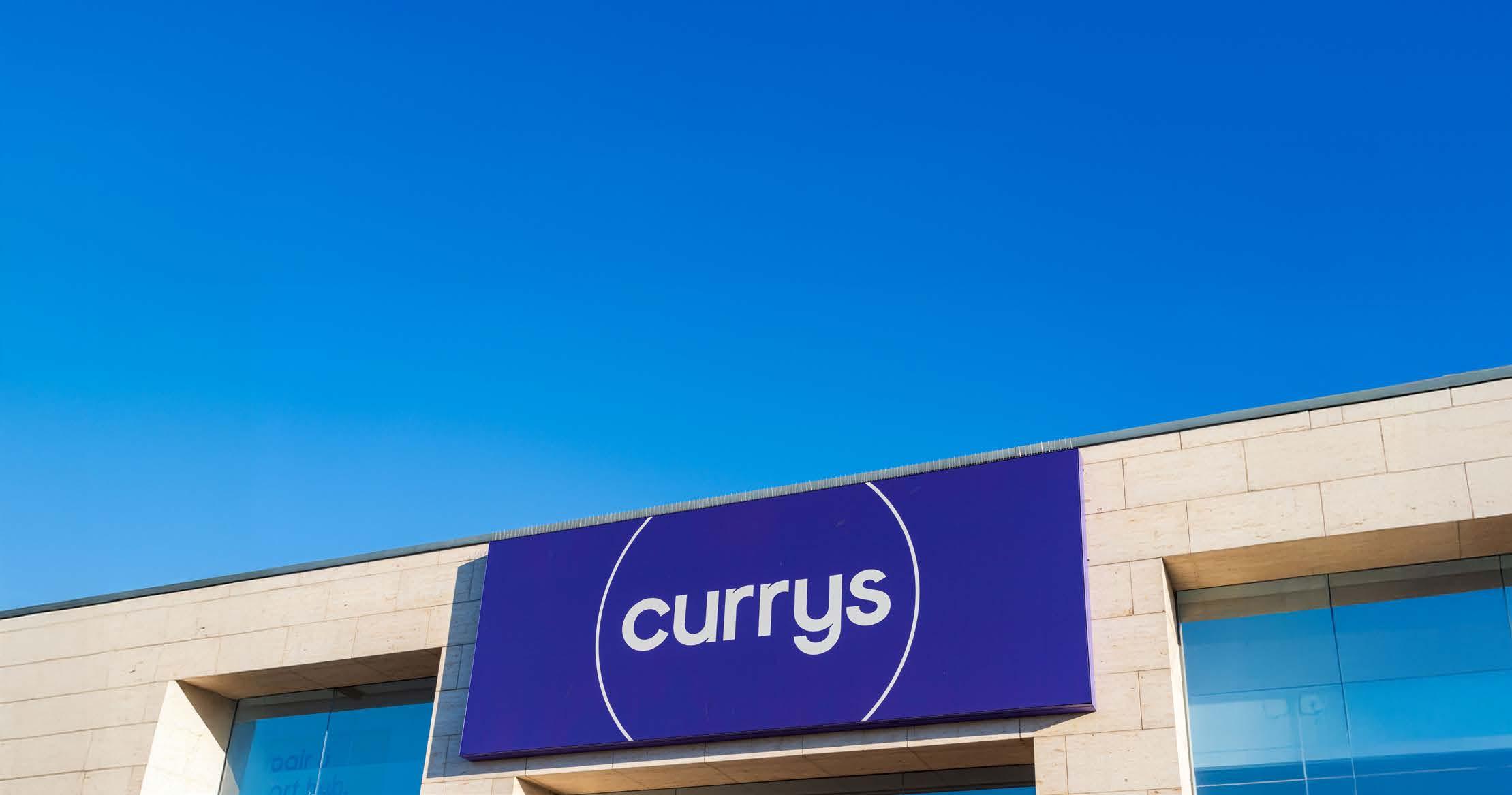
Having fended off takeover interest from private equity giant Elliott Advisors last year, omni-channel electronics retailer Currys (CURY) is demonstrating the board’s decision to spurn bids opportunistic bids at 62p and 67p and go it alone was the correct one. A flurry of earnings upgrades have since ensued, driving Currys’ share price higher, during a period when many rival UK consumer-facing firms have been delivering downgrades.
Shares has had a positive view on the name for some time. One of the last remaining electronics retailers with a physical high street presence, Currys is making a virtue of this status by offering handholding when people are buying increasingly complex consumer technology; it also offers services ranging from credit to delivery, installation, repairs and recycling which bring competitive advantages and help Currys stand out from the crowd.
And yet, given the extra costs loaded onto the business by Rachel Reeves’ national insurance and minimum wage hikes, a consumer still grappling with inflationary pressures and the uncertainty unleashed by Donald Trump’s tariffs, can the TVsto-laptops purveyor keep the upwards earnings revisions coming?
SELF-HELP DRIVEN UPGRADES
Investment bank Berenberg points out, ‘the
primary driver of Currys’ profit growth and earnings upgrades had been self-help through sustainable gross margin and cost-savings initiatives, from which there is more to come’.
And crucially, Berenberg also argues the emerging tariff war should have ‘little impact’ on the super-size TVs-to-tumble dryers seller, since Currys does not sell into the US and the retailer could even benefit from China and Far East capacity improvements.
London-headquartered Currys is nevertheless a retailer of big-ticket items, so it would be negatively affected by a downturn in consumer confidence, and given it operates on razor-thin margins, investors should be alert to any sudden changes in the cost picture.
Bossed by CEO Alex Baldock, Currys raised its year-to-April 2025 profit guidance yet again on 3 April. The latest in a series of upgrades followed ‘robust’ trading in the period since 4 January 2025, with the FTSE 250-listed group delivering continued positive like-for-like sales growth in the UK & Ireland as well as the Nordics. ‘What has now changed is that, for the first time in four years, both the group’s UK & Ireland and Nordics divisions are delivering positive like-for-like sales growth,’ notes Berenberg.
Currys now expects adjusted pre-tax profits for the year to 30 April 2025 to be around £160 million, comfortably above the tech product
Source: Berenberg, PE & Dividend Yield based on 93.3p share price
purveyor’s previous £145 million to £155 million guidance range. This upgrade followed an earlier bump up in the profit outlook in January after Currys delivered ‘strong peak trading’. For the 10 weeks ended 4 January 2025, the retailer’s UK & Ireland like-for-like sales increased by 2% with mobile, gaming and premium computing offsetting weaker TV sales, while Nordic likefor-like sales increased by 1% with Currys’ Elkjop chain winning market share from regional rivals.

Having been a drag on Currys’ sales in recent years, the Nordics region has returned to growth and gross margins are expanding in this part of the business. Panmure Liberum believes the outlook in the Nordic economies appears to be improving, ‘prompting us to question whether Nordic EBIT (earnings before interest and tax) margins could return to pre-pandemic levels sooner rather than later. If this were so, we see circa £40 million upside to our outer year forecasts.’
Analysts reckon Currys has probably benefited from a modest uptick in consumer confidence of late, but one of the key drivers of its recent sales uptick is a technology replacement cycle that is driving consumer demand for new AI-enabled computers. As Berenberg observes: ‘There is also an enduring, post-Covid-19 technology replacement
cycle that is now kicking in. Laptops (where Currys has an 80% share of the UK & Ireland new device market), for example, have a four- to fiveyear cycle, which is helping to drive sales, and this is happening at the same time as a transformational shift that is seeing artificial intelligence being incorporated into consumer technology.’
Drawing confidence from its strong cash flow and rehabilitated balance sheet – the company expects to finish the current financial year in a strong net cash position – Currys plans to reinstate the dividend alongside the full year results in July. These robust cash flows will allow Currys to further invest in its competitive advantage and pay down its pension deficit in the year to April 2027.
Debt reduction twinned with earnings improvement could be a powerful re-rating catalyst for Currys, which remains a very cheap stock (see box-out below). Currys’ robust cash flow and fortified balance sheet could also see it go from being prey to predator in the hard-pressed retail sector, should Baldock and his team spy the right opportunity.
‘With upgrades already coming through, a £6 billion-plus self-help additional revenue opportunity and structural tailwinds now emerging, we believe Currys is only at the start of its upgrade cycle,’ insists Berenberg, adding that
‘management’s guidance for “profit and free cash flow growth” in the year ahead has not been based on any macro backdrop improvement.’
Even after the flurry of upgrades that have powered the shares as high as £1 in recent months before settling back at in the 90p to £1 range at the time of writing, Currys trades on a single digit priceto-earnings ratio which implies significant re-rating potential.
As Berenberg notes: ‘One can also argue that the combined value of Currys’ services revenue (circa £700 million of recurring, higher-margin, cashgenerative sales) and its iD Mobile network (2.1 million subscribers) alone is equal to the current entire group market cap.’
Panmure Liberum forecasts Currys will generate £79 million in free cash flow in the current financial year after pension contributions, building to as much as £98 million by full year 2027. But if higher profits are generated in the Nordics, with margins returning to pre-pandemic levels, then the broker’s ‘Blue sky’ assumptions imply Currys could feasibly
generate as much as £180 million of free cash flow by full year 2027. Taking Panmure Liberum’s blue sky free cash flow assumption of £186 million by full year 2027 and applying a valuation of an 8% to 10% yield, then Currys ‘theoretically should warrant a valuation of between £1.86 billion and £2.35 billion’ argues the broker, versus a current market cap of a bit above £1 billion.
‘Not only is positive earnings momentum a key theme, but there are so many free cash flow) catalysts over the next few years, we are surprised the shares are not higher,’ says Panmure Liberum. ‘Consensus is looking for cash on the balance sheet from circa £130 million to £150 million by year-end and our scenario analysis below shows numerous ways that free cash flow could grow greater than two times over the next two years.’

By James Crux Funds and Investment Trusts Editor
featuring AJ Bell Editor-in-Chief and Shares’ contributor
Dan Coatsworth
Tariff turmoil, Tesco warns of price wars and an update on AJ Bell funds






Finding vehicles paying out 4%-plus and with charges of less than 1%
When markets are volatile and the value of your portfolio is moving around on a day-to-day basis there can be some comfort to take from investments which offer a steady stream of income.
The problem is, dividends can sometimes cut or cancelled in the face of uncertainty. Investment trusts, also referred to as closed-ended funds, can like other funds mitigate this risk by investing in a diversified basket of dividend-paying stocks.
As a consequence, they aren’t too impacted by an individual company cancelling or cutting its payout.
Perhaps more significantly, trusts are also permitted to allocate up to 15% of their income to a revenue reserve.
This reserve is intended to support dividend payments during periods of financial difficulty, and as a result many investment trusts have a longstanding history of providing shareholders with consistent dividend growth.
As such, trusts can be attractive to income investors during periods of wider turbulence.
To help with generating some ideas, we have screened the investment trust universe for equityfocused trusts which yield more than 4%. We have also limited our search to names with ongoing charges of 1% or less so not too much of the trust’s performance is being lost to fees.
Unsurprisingly, the Association of Investment Companies, UK Equity Income sector is well represented. The UK market is traditionally a good source of income and its lowly valuation relative to other global markets means some attractive yields
are on offer.
Among the highest-yielding names in this space is The Merchants Trust (MRCH). Founded in 1889, the trust’s current manager Simon Gergel looks to deliver a high and rising income together with capital growth through a policy of investing mainly in higher-yielding large UK companies.
Another high-profile name from the same grouping is City of London (CTY) which has one of the longest dividend increase streaks of any investment trust, having increased its payout for a 58th consecutive year in September 2024.
In other words, last time it didn’t hike the dividend, England was preparing to host an ultimately successful World Cup.
There are several Asia-focused names on the list, although investors may be approaching them with some trepidation given the potential impact on the region from the current US trade policy.
Interestingly there are three trusts in the table which follow JPMorgan’s well-regarded ‘Growth & Income’ strategy, including highly popular vehicle JPMorgan Global Growth & Income (JGGI) as well as the European and Asian iterations.
These trusts look to achieve a blend of income and growth by investing across both defensive and cyclical stocks.
Outliers from our list include BlackRock World Mining Trust (BRWM), which despite dividend cuts in the mining sector is still able to deliver a pretty generous stream of income to holders, and Montanaro UK Smaller Companies (MTU).
Small-caps are not as well known for paying out
dividends as their large- and mid-cap counterparts but Montanaro recently committed to distributing 1.5% of its net asset value each quarter, up from a previous level of 1%.
Dividends are funded through a mix of capital reserves and current year revenue. There is enough capital to maintain this dividend level for years, even assuming no capital gains or income in the underlying share portfolio.
The trust, which was among those targeted by Saba earlier this year in a forlorn attempt by the US activist hedge fund to seize control, also announced a £20 million buyback earlier this year.

By Tom Sieber Editor
Sponsored by Templeton Emerging Markets
Valuations are at a significant discount compared with wider emerging markets and global stocks
Despite hosting several innovative companies, South Korean shares have lagged global and emerging market indices over the long term.
Some of this relates to the recent struggles of Samsung Electronics (005930:KRX) which still has a near-25% weighting in the MSCI Korea index. This helps obscure the fact there are some strong performers in the index, with a clear dividing line between winners and losers. Samsung’s dominance also explains why information technology is such a dominant sector, accounting for more than 40% of the index.
Industrials, consumer discretionary stocks and financials also have a meaningful presence, reflecting the country’s strong automotive and aerospace industries.
What is striking is the underperformance of
annualised gross returns
MSCI, data as at 31 March 2025


MSCI Korea versus the broader emerging markets and MSCI ACWI (All Countries World Index) global indices over the long term.
From 31 May 1994 through to 31 March 2025, MSCI Korea has delivered an annualised return of just 4.7% versus 5.3% for emerging markets and 7.9% for MSCI ACWI.
On a 10-year view it compares even more poorly with an annualised return of just 2.2% versus 4.1% for MSCI Emerging Markets and 9.1% for MSCI ACWI.
This has left the index’s average forward price to earnings ratio at a significant discount to both its global and broad emerging markets counterparts – at 8.3 times versus 12 times for MSCI Emerging Markets and 17 times for MSCI ACWI.
This outlook is part of a series being sponsored by Templeton Emerging Markets Investment Trust. For more information on the trust, visit www.temit.co.uk

Sponsored by Templeton Emerging Markets

Three things the Templeton Emerging Markets Investment Trust team are thinking about right now
1.
Trade. The United States accounts for 13% of global imports, down from 20% two decades ago. The European Union (EU) and China account for 20%. While Liberation Day had a dramatic impact on equity markets globally, we believe the optimal response for the largest trading nations is to increase trade with each other as opposed to picking a fight with the United States, which is pursuing unorthodox economic policies.
2.
Chinese banks raising capital. Four of China’s biggest banks raised RMB 520 billion in fresh capital from the Ministry of Finance to boost common equity tier 1 ratios, which will rise an average of one percentage point. The goal is to boost capital buffers to enable loan growth to continue for “focus” areas including technology, green energy, inclusive lending, retirement and digital. There will be low doubledigit earnings dilution, but we expect dividends to remain secure.
3.
South Korea. One of our equity portfolio managers in Asia visited South Korea, one of the key countries for our portfolios. One key takeaway – which was contrary to our expectations – was that, among investors, there was little angst over tariffs. This could be the beauty of employing a longer-term, bottom-up approach. In our view, there is no clear outlook on South Korean automobile exports. The weaker
macro backdrop has led to some caution on a weaker model cycle. Despite this, the automobile makers that our portfolio manager met were very confident about maintaining their profit margins Our portfolio manager also met prominent memory chip makers during the trip. The competition between the two larger companies in high bandwidth memory (HBM) segment continues. One company is lagging the other, with their fifth-generation HBM chips yet to be qualified by a key customer. The company has just pledged to shift its portfolio to increase sales of HBM.
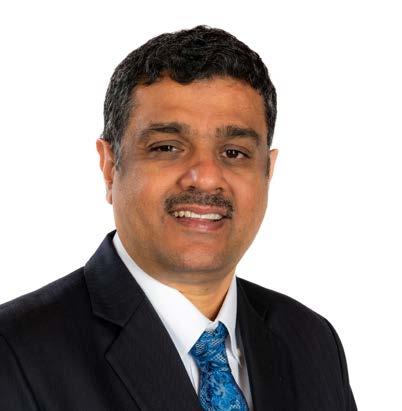
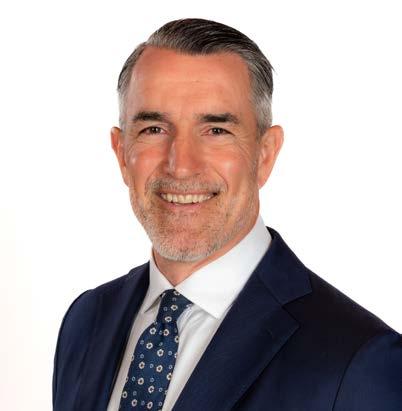
TEMIT is the UK’s largest and oldest emerging markets investment trust seeking long-term capital appreciation.


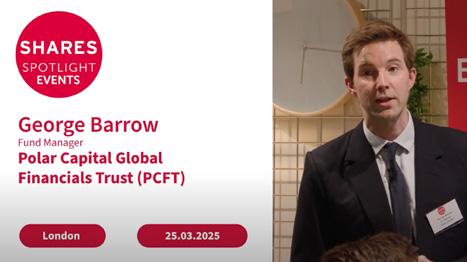

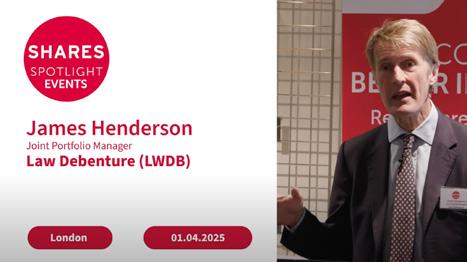
As one of the largest sectors globally, financial companies play a vital role in the health and development of modern economies. An activelymanaged portfolio, the Polar Capital Global Financials Trust seeks to find the best investment opportunities across the world of financials, with the aim of delivering income and capital growth.
abrdn Asia Focus (AAS)
Gabriel Sacks, Fund Manager
abrdn Asia Focus plc (AAS) We aim to find the best managed Asian smaller companies that are setting the new standard. The Company strives to maximise total return to shareholders over the long term from a concentrated, high-conviction portfolio focusing predominantly on exciting, smaller, listed companies in Asia (excluding Japan).
Law Debenture (LWDB) At Law Debenture our objective is to achieve long-term capital growth in real terms and steadily increasing income. The aim is to achieve a higher rate of total return than the FTSE Actuaries All-Share Index Total Return through investing in a diversified portfolio of stocks. We have grown or maintained our dividend for each of the last 44 years through our value driven, diversified portfolio managed by James Henderson and Laura Foll of Janus Henderson Investors.

It is possible to transfer between most cash and stocks and shares iterations of the tax wrapper with relative ease
The start of the new tax year was quickly upstaged this month by the arrival of tariff policies that sent equity and bond markets into a flurry.
Before Trump took over the headlines, investors faced the usual deadline to max out their ISA contributions before the year was up, to take advantage of their £20,000 allowance. But now that the new year has started, some circumstances may have changed, causing you to reanalyse if you’d like to hold those savings in investments or cash.
While ISAs currently have a £20,000 limit per year for contributions, how that money is split across different ISAs has a higher degree of flexibility. There’s no cap on the number of ISAs you can open, and no limit on transfers between those accounts.
This means ISA holders can transfer portions of their savings through the different vehicles without eating into
the allowance if they decide they want to invest or put money back in cash.
There are still some restrictions around this. Savings in Lifetime ISAs, which are allocated specifically for first-time home buyers and retirement savings, will still be hit with a 25% penalty if they are moved into another account type outside of these restrictions.
But investors can move money between cash ISAs and stocks and shares ISAs with relative freedom.
As of 2024, this can include moves of partial amounts of savings in an ISA from one account to another regardless of what year it was contributed. Previously, only the entire contribution from the previous year could be moved from ISA to ISA.
While ISAs currently have a £20,000 limit per year for contributions, how that money is split across different ISAs has a higher degree of flexibility. ”
Transferring between accounts does not mean manually withdrawing from one ISA and reinvesting in another. If you use this method, the money will lose its tax protection, and it will be treated as a new investment,
eating into your £20,000 limit, when you try to reenter it into an ISA wrapper.
Instead, the request is made to your ISA provider. This can be a new ISA provider or the current one. After filing the request, it should take 30 days or less to transfer between the different types of ISAs, or 15 days if you are moving between cash ISA accounts.
If moving money from a cash ISA to stocks and shares, there should be very little friction. However, if you are transferring from a stocks and shares ISA and moving to cash, you must have the amount you’d like to transfer available in cash in the stocks and shares account. If not, you would need to sell some of the investments in the account to move to a cash holding.
Depending on the provider, or if you are switching providers, there could be fees along with the transfer, so it’s always a good idea to check the small print before making the move.
By the end of the 2024/25 tax year, about £431 billion was invested in stocks and shares ISAs while £294 billion was held in cash.
While the majority of Brits still don’t have an ISA, among those who do, cash was the more popular option for contributions. Only 7% of investors aged 45-54 contributed to a stocks and shares ISA, while 11% contributed to a cash ISA, and 1% contributed to both. This was the same for investors aged 55 to 64, and younger savers put even less in stocks and shares.


In the current market, it’s easy to see why investors have been eager to opt for cash. The Bank of England interest rate, at least for the moment, remains at 4.5%, creating comfortable returns. But over time, interest made on cash has failed to match the stock market’s inflation-busting credentials. In the past 20 years, the Bank of England estimates the price of goods has gone up by 73.6%. The MSCI World Index has increased, in pounds sterling, by 554.2% in that same amount of time.
Can these same rules of transferring work for moving money into someone else’s ISA? Not really. You are the only person that can contribute to your ISA. But you can spread the wealth around your family to max out contributions. If your child has a Junior ISA, anyone can make contributions, including grandparents and family friends.
And while you can’t transfer an ISA directly to a spouse, you can withdraw that money and gift it to them tax free to use up both of your £20,000 allowances. Just remember, that money is now technically theirs. But if that money would otherwise not be invested in a tax wrapper, it can be a helpful way to create tax-free returns if the money is placed in a stocks and shares ISA.

Hannah Williford AJ Bell Content Writer

1 MAY 2025 FARMERS AND FLETCHERS IN THE CITY
3 CLOTH ST
LONDON EC1A 7LD
Registration and coffee: 17.15 Presentations: 17.55
During the event and afterwards over drinks, investors will have the chance to:
• Discover new investment opportunities
• Get to know the companies better
• Talk with the company directors and other investors
FIDELITY EMERGING MARKETS LIMITED (FEML) Draws on Fidelity’s resources across the globe to build a carefully curated portfolio of companies with a strong growth runway. High-quality emerging market companies should deliver strong and sustainable investment returns over the long term but keeping an eye on potential risks is vital. These markets may be more volatile, and company valuations can move to extreme levels in both directions.
TARGET HEALTHCARE REIT (THRL)
The leading listed investor in UK care home real estate. We are a responsible investor in modern, ESG-compliant, purpose-built care homes which are commensurate with modern living and care standards. We partner with high-quality care providers on long leases to provide shareholders with an attractive level of income together with the potential for capital and income growth.
TOUCHSTONE EXPLORATION (TXP)
The largest independent onshore oil and natural gas producer in Trinidad, listed on the LSE and TSX. The team has over a decade of experience operating in Trinidad’s oil and gas sector and has built a diverse portfolio comprised of highly exciting exploration, development, and production assets across southern Trinidad.


Buying broad exposure, former winners and boring but trusted friends were top choices
Why is it that investors find it easier to keep buying when markets are going up rather than down? The goal of an investor should be to get the best price possible, yet emotions often get in the way.
A rising market makes it feel as if everything is going to work out fine. An investor might think markets will keep rising and everything they buy will appreciate in value. In contrast, a falling market can trigger fear and make you wonder what nasties are lurking around the corner.
The Liberation Day-induced crash in financial assets effectively put the market ‘on sale’. It created an opportunity to buy thousands of stocks and funds at a lower price than they’d traded only days earlier.
An investor with a long-term horizon might have taken the view that market declines are perfectly normal – and history shows that is correct – and that asset prices will eventually recover. Therefore, buying on the dip is a means by which to snag a bargain.
Certain people will have had their eyes on a stock in the past that looked interesting but too expensive. It’s times like now that it’s worth dusting off that wish list. For example, two of the best gains I’ve personally made in my portfolio have come
from buying during selloffs in 2016 when the Brexit vote toppled the market and during Covid when the pandemic hurt shares globally.
HARDER THAN YOU THINK
With the benefit of hindsight, it’s easy to look at the past and say market dips are perfect times to buy. However, investing when markets are weak takes nerve. When you’re in the heat of the moment, it feels like you’re about to jump off the diving board, hoping you’ll glide into the water but secretly fearing you’ll do a belly flop.
FTSE All Share
Source: LSEG
Five years ago, when Covid caused a global market crash, one might have taken the view that scientists would eventually create a vaccine to lift the world out of the pandemic. Therefore, buying on the dip might not have felt like such a leap of faith.
Liberation Day has a different vibe, and one where it’s harder to predict the long-term impact of Donald Trump’s sweeping tariffs. That makes buying on market weakness a higher-risk decision, certainly while the situation around tariff rates keeps changing.
Worst case scenario, Trump’s tariffs completely change the flow of trade globally and cause major disruption to supply chains and company profits. Best case scenario, Trump rolls the tariffs back. It’s still a fluid situation and trying to time the market is an impossible feat. That means regular investing is the way forward – continue to make monthly contributions to your ISA or pension and stay focused with the same investment plan as preLiberation Day.
Looking at trends among DIY investors using AJ Bell’s platform, it was reassuring to see that individuals weren’t panicking when the Liberation Day market selloff unfolded. Trading activity was double normal levels on the second and third day of the market selloff as investors moved to protect and reposition portfolios. Customers buying investments outnumbered sellers two to one.
The start of the selloff also coincided with tax year-end, meaning lots of customers will have topped up their ISAs and pensions to use any allowances they had remaining last year and the new allowances that have become available this tax year.

Vanguard S&P 500 ETF
Fidelity Index World
Barclays
HSBC FTSE All World
Legal & General
Nvidia
BP
SPDR S&P 500 ETF
iShares S&P 500 ETF
Rolls-Royce
Source: AJ Bell, 3 to 10 April 2025

The way individuals respond to the selloff will depend on their own personal circumstances. However, there were three clear trends among AJ Bell’s DIY investors who felt confident enough to keep buying during the first week of the market sell-off.
With so much uncertainty around which countries and companies would be winners and losers, investors took a broad approach by casting their net as wide as they could via global equity market tracker funds. Fidelity Index World (BJS8SJ3) and HSBC FTSE All World Index (BMJJJF9) were among the most popular fund choices, offering low-cost exposure to stock markets around the world. When markets are rocky, it’s natural to turn to old friends who have made you good money in the past. US equity tracker funds such as Vanguard S&P 500 ETF (VUSA) and chip giant Nvidia (NVDA) might have gone off the boil this year, even before Liberation Day, but they’ve delivered the goods big time in preceding years. Investors might have seen them ‘on sale’ as a result of the market sell-off and pounced on the opportunity to buy at a much cheaper price than seen for a while.
Finally, investors scouted for opportunities

for stocks that might not be the most exciting, but which have been bashed around and subsequently offered high dividend yields as a result of the share price weakness such as Legal & General (LGEN), or where a decline in their price to earnings metric made them look more interesting from a valuation perspective which was the case with Barclays (BARC)
For the first week post-Liberation Day, Barclays was the most popular UK stock for AJ Bell DIY investors. Banking shares initially fell as investors worried about the prospect of a global economic slowdown and how that might translate into lower demand for lending, and a rise in bad debts for those who have already borrowed money.
In Barclays’ case, its exposure to investment banking also made it a potential loser from the trade war if that led to ongoing market volatility and a reduction in M&A activity, curbing its income for deal advice and fundraising. Certain investors might have taken the view that the shares had
Source: LSEG
fallen far enough whereby the risk/reward ratio favoured buying.
Disclaimer: AJ Bell, referenced in this article owns Shares magazine. The author (Dan Coatsworth) and editor (Tom Sieber) own shares in AJ Bell.

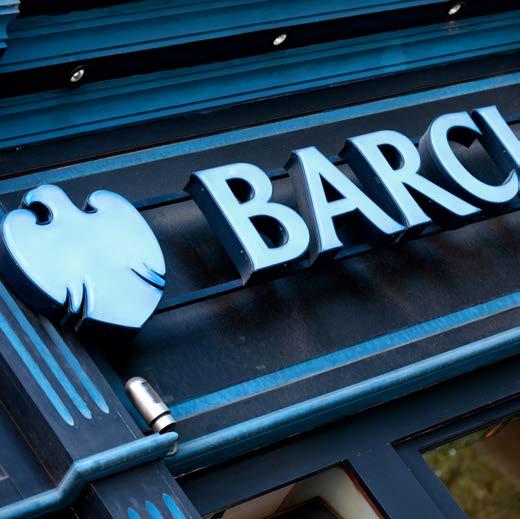
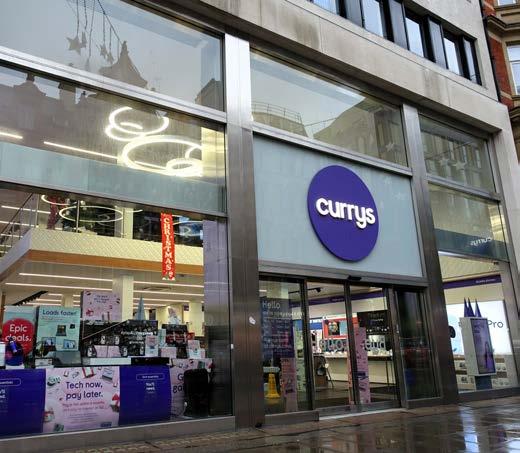





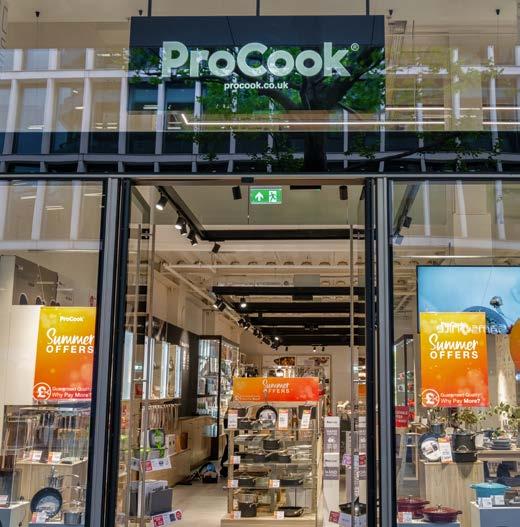



EDITOR: Tom Sieber @SharesMagTom
DEPUTY EDITOR: Ian Conway @SharesMagIan
NEWS EDITOR: Steven Frazer @SharesMagSteve
FUNDS AND INVESTMENT
TRUSTS EDITOR: James Crux @SharesMagJames
EDUCATION EDITOR: Martin Gamble @Chilligg
INVESTMENT WRITER: Sabuhi Gard @sharesmagsabuhi
CONTRIBUTORS:
Dan Coatsworth
Danni Hewson
Laith Khalaf
Russ Mould
Laura Suter
Rachel Vahey
Hannah Williford WHO
Shares magazine is published weekly every Thursday (50 times per year) by AJ Bell Media Limited, 49 Southwark Bridge Road, London, SE1 9HH. Company Registration No: 3733852.
All Shares material is copyright. Reproduction in whole or part is not permitted without written permission from the editor.
Shares publishes information and ideas which are of interest to investors. It does not provide advice in relation to investments or any other financial matters. Comments published in Shares must not be relied upon by readers when they make their investment decisions. Investors who require advice should consult a properly qualified independent adviser. Shares, its staff and AJ Bell Media Limited do not, under any circumstances, accept liability for losses suffered by readers as a result of their investment decisions.
Members of staff of Shares may hold shares in companies mentioned in the magazine. This could create a conflict of interests. Where such a conflict exists it will be disclosed. Shares adheres to a strict code of conduct for reporters, as set out below.
1. In keeping with the existing practice, reporters who intend to write about any securities, derivatives or positions with spread betting organisations that they have an interest in should first clear their writing with the editor. If the editor agrees that the
reporter can write about the interest, it should be disclosed to readers at the end of the story. Holdings by third parties including families, trusts, selfselect pension funds, self select ISAs and PEPs and nominee accounts are included in such interests.
2. Reporters will inform the editor on any occasion that they transact shares, derivatives or spread betting positions. This will overcome situations when the interests they are considering might conflict with reports by other writers in the magazine. This notification should be confirmed by e-mail.
3. Reporters are required to hold a full personal interest register. The whereabouts of this register should be revealed to the editor.
4. A reporter should not have made a transaction of shares, derivatives or spread betting positions for 30 days before the publication of an article that mentions such interest. Reporters who have an interest in a company they have written about should not transact the shares within 30 days after the on-sale date of the magazine.